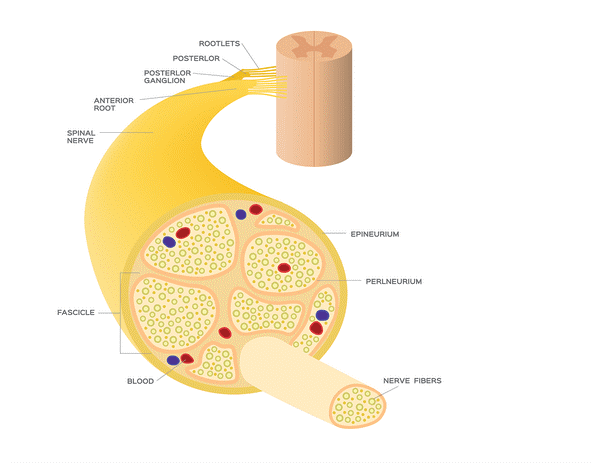- Small Dog Place Home
- Diseases
- Syringomyelia in Small Dogs
Syringomyelia in Small Dogs: Chiari Malformation—The Cost of the Adorable Appearance
Syringomyelia in Small Dogs by Jana Rade |Updated 05-08-2024
Who doesn’t love small dogs? They make loving companions and faithful friends. Their size and adorable looks do, however, come at a price. Tiny dogs can face significant health challenges; you might be familiar with most of them. Have you ever heard of Syringomyelia, though?
If you love Cavalier King Charles Spaniels or one of the other susceptible small dog breeds, listen up.

What the Heck is Syringomyelia in Small Dogs?
Syringomyelia describes a neurological disorder that is caused by fluid-filled cysts within the dog’s spinal cord. As these cysts form and expand, they press on the nerves causing pain and eventually can damage the nerve fibers.
You could picture the spinal cord as a fiber optics cable, carrying signals between the brain and the rest of the body.
Spinal Cord

You might be familiar with the amount of pain and trouble when the spinal cord gets pressed by a herniated disc. Do you think that having fluid pockets pushing their way directly into the spinal cord would feel any better? It does not.
How does Syringomyelia in Small Dogs Happen?
Syringomyelia can result from trauma or tumors but the most common cause in small dogs is something they are born with—a Chiari malformation.
Chiari Malformation
In the past, the primary purpose behind selective breeding was function. These days, however, the primary goal has been to achieve a specific look. In small breeds, the efforts are geared toward creating adult dogs that look like puppies,
Sadly, the cost of the irresistible looks can be high. What if you created a dog with a smaller skull, but the brain didn’t keep up with the “evolution?” You end up with a dog whose brain doesn’t fit where it belongs. This developmental abnormality is labeled a Chiari malformation.
As a result, the back portion of the brain is pushed into the back of the skull, which obstructs the flow of the cerebrospinal fluid.
Cerebrospinal Fluid
Similarly to a baby in a womb, the brain and spinal cord float in a fluid to support its weight and protect it from increases in pressure—the cerebrospinal fluid (CSF). With every beat, the heart sends a large volume of blood to the brain. This increased pressure displaces an equivalent amount of the cerebrospinal fluid from the skull down into the spinal cord. The fluid flows back and forth as needed.
In dogs with Chiari malformation, the normal flow is blocked. Increased pressure forces the CSF into places it doesn’t belong, forming cysts—Syringomyelia.
Susceptible Small Dog Breeds

Cavalier King Charles Spaniels are the breed that is plagued by this condition the most. Other toy breeds, however, can have the problem as well such as
- Brussels Griffon
- Maltese
- Yorkshire Terrier
- Chihuahua
- and other toy breeds
What Does it Look Like?
Some dogs can go through their lives and not have any symptoms at all.
The initial sign of Syringomyelia can be easily dismissed—and even misdiagnosed—as allergies because it involves scratching toward the neck, chest, or shoulder. A colloquial term for Syringomyelia is “scratcher’s disease.” Fortunately, there is better awareness of the condition than it used to be.
Unlike with allergies, the paw typically does not actually make contact with the skin. The affected dog will usually do this only on one side and appear obsessive to the point that they eventually won’t be able to walk more than a couple of steps without stopping and scratching.
Unfortunately, as the condition progresses, your dog will show more obvious signs of pain and neurological deficits. They will become withdrawn, yelp, whine, or even scream in pain, unable to play or even walk.
It can end up looking a whole lot like disc disease or injury.
Common Symptoms of Syringomyelia

In summary, common symptoms of Syringomyelia in small dogs include:
- excessive scratching at the ears, neck or back of the head
- face rubbing
- sensitivity to touch
- grooming intolerance
- exercise intolerance
- restlessness
- hiding/withdrawal
- crying in pain
- weakness/poor coordination
- inability to walk
Can Syringomyelia be Prevented?
The only way of preventing Syringomyelia in small dogs involves responsible breeding practices. You can be the change for the affected small breeds by understanding the conditions and raising your expectations from breeders.
How is Syringomyelia Diagnosed?
There are other health issues that can cause neck pain—it is essential to have a correct diagnosis.
One condition that can closely mimic syringomyelia symptoms is primary secretory otitis media (PSOM)—also known as “glue ear.” It is what it sounds like—thick mucous accumulates in the middle ear forming a plug. The plug might cause bulging of the eardrum, causing pain and other symptoms. The bulging drum might be visible with an otoscope.
Unless your veterinarian can arrive at such a simple diagnosis, though, MRI is the only way to conclusively diagnose the problem and rule out or confirm Syringomyelia.
How is it Treated?

The earlier any problem is treated, the better the outcome. It is no different with Syringomyelia.
Home Management
Non-therapeutic measures involve things such as elevated food bowls and switching from a collar to a shoulder harness.
Medical Therapy for Syringomyelia in Small Dogs
Medical therapy is more affordable and less invasive, which often makes it treatment of choice. The goal of medical management consists of three strategies:
- pain relief
- reduction of swelling
- reduction of CSF pressure
Unfortunately, usually, you need to pick because trying to do all three leads to negative interactions and side effects.
The typical strategy involves reducing the production of the cerebrospinal fluid and pain medication. NSAIDs might be added for further pain relief. Some dogs receive steroids.
Medicating a dog suffering from Syringomyelia can be a balancing act of finding the right combination for your dog.
Unfortunately, these measures can slow the progress of the disease but not stop it.
Surgery
Surgery is considered to be the most effective treatment and can buy up to two years of good quality of life for about 45 percent of dogs.
The surgical intervention aims to improve the shape of the back of the skull and decompress the CSF flow obstruction. As great as that sound, the resulting scar tissue eventually leads to recurrence.
Syringomyelia in Small Dogs: Last Words
Watching your dog suffer the effects of Syringomyelia is heart-wrenching, and available treatments so far can only buy time.
That’s why awareness and prevention are key to eliminating suffering these dogs have to go through. Please discuss your concerns with your breeder before agreeing to purchase a puppy.
Syringomyelia in Small Dogs:
Pin for Future Reference
Related Articles of Interest to Anyone Experiencing Syringomyelia in Their Dog
Further reading:
Chiari-like Malformation and Syringomyelia
Syringomyelia in Dogs: The Dark Cloud Of Syringomyelia—Fight For Ella
Author Bio (Syringomyelia in Small Dogs)
Jana Rade: My goal is to teach people to see what their dog is telling them and how to think about what they’re seeing.
As a member of the the Dog Writer’s Association of America, she won the 2017 Moriss Animal Foundation Canine Health Award for the best-science based book about canine health issues. Is also the recipient of the 2017 Maxwell Award for a book on health, behavior and general care.
About Janice (author and voice behind this site)
Having lived with dogs and cats most of her life, Janice served as a veterinary technician for ten years in Maryland and twelve years as a Shih Tzu dog breeder in Ohio.
Her education includes undergraduate degrees in Psychology with a minor in biology, Early Childhood Education, and Nursing, and a master's in Mental Health Counseling.
She is a lifelong learner, a dog lover, and passionate about the welfare of animals. Her favorite breed for over 50 years has been the Shih Tzu, but she has also lived with Poodles, Maltese, Yorkshire Terriers, Beagles, English Bulldogs, Carin Terriers, and a Cocker Spaniel.
When not writing, reading, and researching dog-related topics, she likes to spend time with her eight Shih Tzu dogs, husband, and family, as well as knitting and crocheting. She is also the voice behind Miracle Shih Tzu and Smart-Knit-Crocheting
Does This Article Deserve Your Thumbs Up?
We always appreciate your support and encouragement. Your thumbs up means so much to us. Please like this article.
If you find this page or any page on Small Dog Place Helpful, or useful in anyway, I'd love it if you would click the small heart found on the bottom right of each page.
You can also share or bookmark this page -- just click on the:

Free Monthly Newsletter
Sign Up for Our Free Newsletter and get our Free Gift to You.
my E-book, The Top 10 Mistakes People Make When Choosing a Dog (and how to avoid them)


